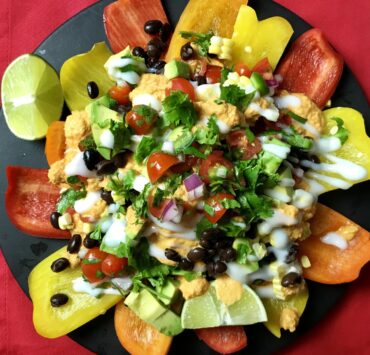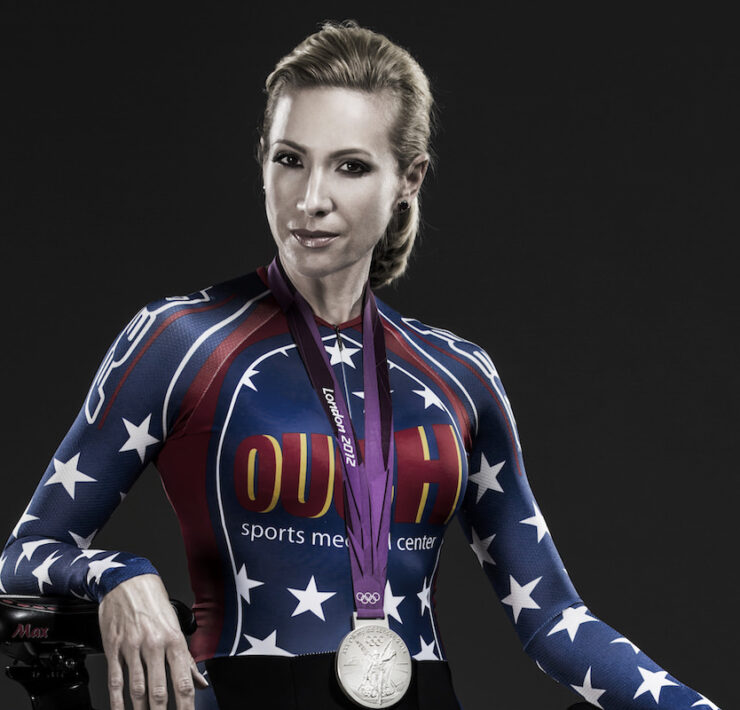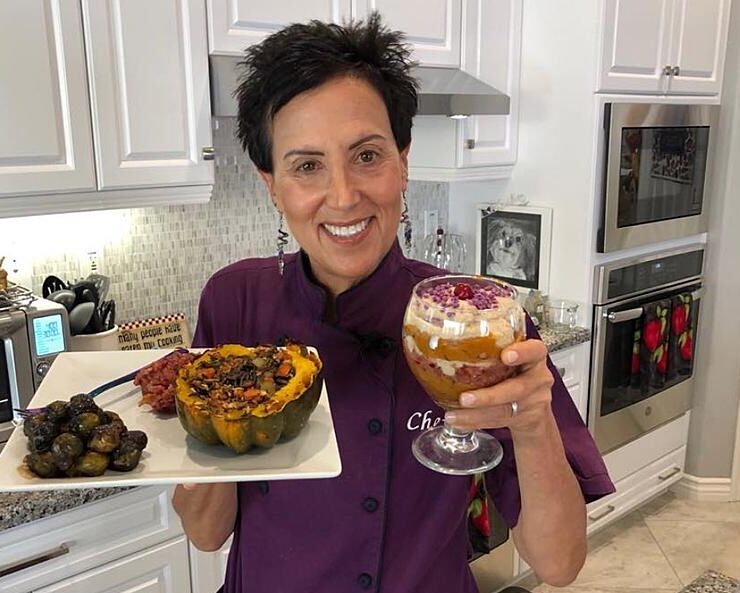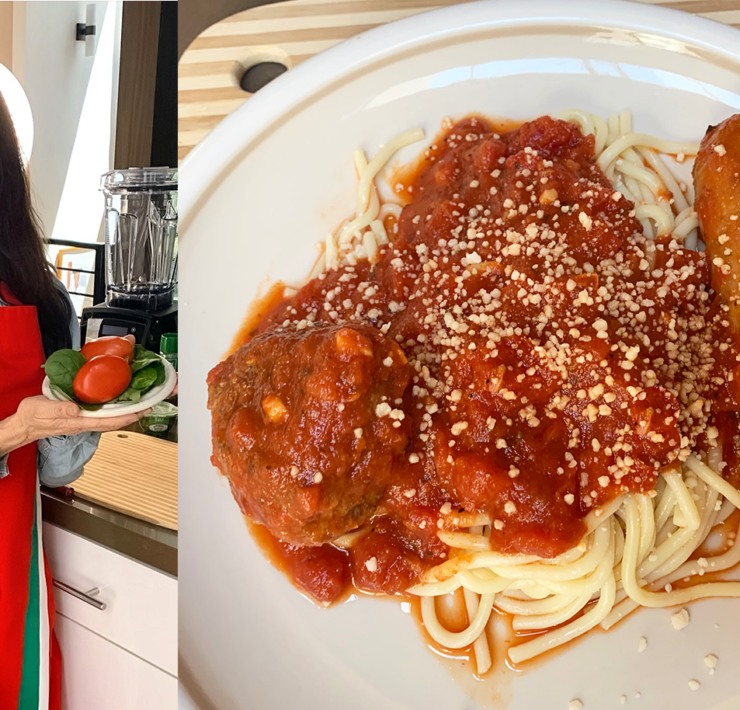How to maintain your weight when switching to a plant-based diet

When I’m at the rink, people know that I’m a vegan hockey player and many approach to ask what I eat and drink while training and recovering. A couple players–one male and one female–tried ditching dairy and eating vegan but encountered unexpected results that led to abandoning their diet change. One says he was starving all the time while the other said she gained weight. I couldn’t explain why either would happen. Because I believe adopting a whole-foods, plant-based diet is ideal for everybody, I needed to get answers for these athletes who tried unsuccessfully (thus far) to switch for good.
For this two-part feature, I reached out to Dr. Cyrus Khambatta, who has a PhD in Nutritional Biochemistry from Cal Berkeley. As a type 1 diabetic who adheres to a dairy-free, plant-based diet, Dr. Khambatta educates people on how to reverse insulin dependence through diet and exercise via Mastering Diabetes (https://www.masteringdiabetes.org). This article will specifically address the athlete who claimed to be starving–more on the one who gained weight in the next article.
“Often people go overnight from the Standard American Diet to being strict vegan and in so doing, they end up having to change multiple things at the same time. They’re changing the types of foods they’re eating; they’re eliminating certain types of foods and they’re adding certain types of food. They might be changing the total amount of calories they’re consuming. It can become a little daunting and a little too much so that after two or three weeks, it’s exhausting, and they give up. We teach people how to walk slowly. We just want you to change one thing at a time,” said Dr. Khambatta.
Come to think of it, my own change 29 years ago was gradual, and I didn’t experience either of the problems my friends reported. Dr. Khambatta’s forgiving and patient approach seems to be common sense. He explained what this process looks like in practice.
“The first week it might be breakfast. We give clients a formula for breakfast and how to make that one meal work. Don’t change your lunch and don’t change your dinner. They get used to it; they practice it multiple times. They figure how much they need to eat. How does it make you feel? What does it do to your workouts, your mental clarity and your bodyweight? Then, week two, once they become comfortable with their change from week one, we move onto lunch. They do the same thing for lunch. Week three, we move onto dinner. By week four, they usually have breakfast, lunch and dinner down so then it’s time to work on things like snacks or desserts,” said Dr. Khambatta. “Over the course of about a month, people can ‘walk’ into the process of changing their diet. In that way, it feels less overwhelming and, at the same time, they’re able to track variables. If you change too many things at one time, we don’t know what caused a positive outcome or a negative outcome like what your friends experienced.”
The hungry hockey player is a registered ER nurse who works grueling 12-hour shifts while also juggling his responsibilities as a husband and a father. At 5’11,” he’s got a thick frame that serves him well as a rugged defenseman on the ice. I hear from him periodically and he tells me that while he wasn’t able to completely go plant-based, he still tries to incorporate dairy-free meals into his busy and very active lifestyle as much as he can. During his vegan trial, he ate two cups of salad three times a day, vegan protein powder, lentil or brussels sprout soup, black bean burger patties, vegan burritos and fruit.
“Honestly, breakfast was my hardest meal because I didn’t know what to eat so I usually did a salad with protein powder. I was going off of what one of my coworkers eats. She is vegan and I’m not well educated as to what to eat,” he admitted.
Dr. Khambatta explained, “Often times when somebody goes vegan or plant based, they’re not 100% sure of exactly what to eat. The traditional view of a plant-based diet is to eat tomatoes and carrots. Often times, what I see people doing is gravitating towards eating salads throughout the day for both lunch and dinner. In most situations, people become calorie deprived. Total calories matter for sure. If their baseline calorie requirement is like 3,000 calories for the day, especially for an athlete, they could end up eating something like 2,000 calories or 2,500 calories for the day, which means they’re at a 500 to 1,000-calorie deficit. Over the course of multiple days, a week, or a month, they would lose weight and be extremely hungry.”
That makes sense. But our bodies and food are more complex than simple math equations. You can actually get the same number of calories, but different foods are more-dense calorically speaking than others, which foster feelings of satiety. For instance, I like to munch on nuts as a snack. A hundred calories of nuts will feel more satiating than a hundred calories of leafy vegetables like kale, lettuce or spinach.
“Eat calorie-dense fruits and vegetables or legumes or whole grains…things like potatoes, squash and corn. Legumes like beans and lentils tend to be more satiating. Whole grains like quinoa and brown rice. When we teach people to eat foods like that, regardless if they ate their 3,000 calories from eating fluffy foods like lettuce or whether they made it from eating calorie-dense foods, in most situations, people who ate the calorie-dense options are going to feel more satiated and fuller. They’re going to be more likely to stick to the plant-based diet for the long term. Calories in versus calories out matters, but also the type of food, the density of the calories in the food that you eat makes a big difference,” said Dr. Khambatta.
I grew up in a meat-and-potatoes household and when I started my plant-based journey initially as a vegetarian, I ate pasta and vegetables every day. Pasta is heavy like meat and potatoes, which is probably why I didn’t experience hunger during my transition.
Dr. Khambatta said, “When you go from a Standard American Diet where you’re eating things like steak, eggs, and chicken and dense pastas and cream sauces, those foods are very calorie dense. They’re two to three-times as calorie dense as something like potatoes. People who come from a background of eating calorie-dense foods, they’re used to the feeling it creates inside their stomach and small intestines, and it gives them a certain satisfaction. The trick is to not only get enough calories, but to mimic that sense of satisfaction from calorie-dense plant-based foods. It’s definitely doable. It’s just that there’s this psychological feeling when you’ve eaten calorie-dense foods that gives you a feeling of fullness and if you miss that, even if you’re getting the right number of calories, then it can feel like a plant-based diet is lacking, that it’s unexciting. Over the course of time, people are likely to abandon it altogether.”
Earlier, I referenced my own transition to plant based involving daily dense, satiating pasta and veggies meals. As an athlete who trains over two hours per day, I still tend to eat heartier meals such as vegan burgers, seitan, massive protein smoothies packed with fruit and vegetables, a protein bar to start recovery as soon as I get off the ice, a variety of nuts, big salads loaded with beans and hempseed, and the old-school pre-workout peanut butter and jelly or banana on one slice of bread.
Can’t wait for my hungry friend to read this article. My hope is that he will apply this newfound knowledge by giving a dairy-free, plant-based diet a second chance. In the next article, Dr. Khambatta will get into possible reasons why someone might gain weight when making the switch to a vegan diet.
#veganhockeyplayer









